Key takeaways:
- Community housing policies are essential for providing affordable and safe housing, reflecting local needs and fostering inclusivity.
- Local housing policies improve quality of life by addressing immediate needs and encouraging diverse socioeconomic contributions.
- Key components for effective housing development include proper planning, infrastructure development, and community engagement.
- Challenges in housing include funding limitations, resistance from residents, and the need to meet diverse housing requirements.

Understanding community housing policies
Community housing policies are essentially frameworks set by local governments to ensure that all residents have access to affordable and safe housing. I remember a time when my neighbor faced eviction due to rising rents; it really drove home the importance of having supportive policies in place. How could we allow people to be pushed out of their homes simply because of financial constraints?
These policies can vary significantly from one community to another, reflecting local needs and values. In my experiences, I’ve seen some neighborhoods thrive when policy implementations focus on inclusivity and sustainability. When community members experience a genuine say in these policies, it fosters a deeper connection to their homes and strengthens communal bonds.
It’s crucial to understand how policies can affect not just individuals, but entire communities. I often think about the long-term impact of a policy: Will it create more affordable units, or will it lead to displacement? Engaging with these questions is not just academic; it’s about shaping a future where everyone can find their place in the community.
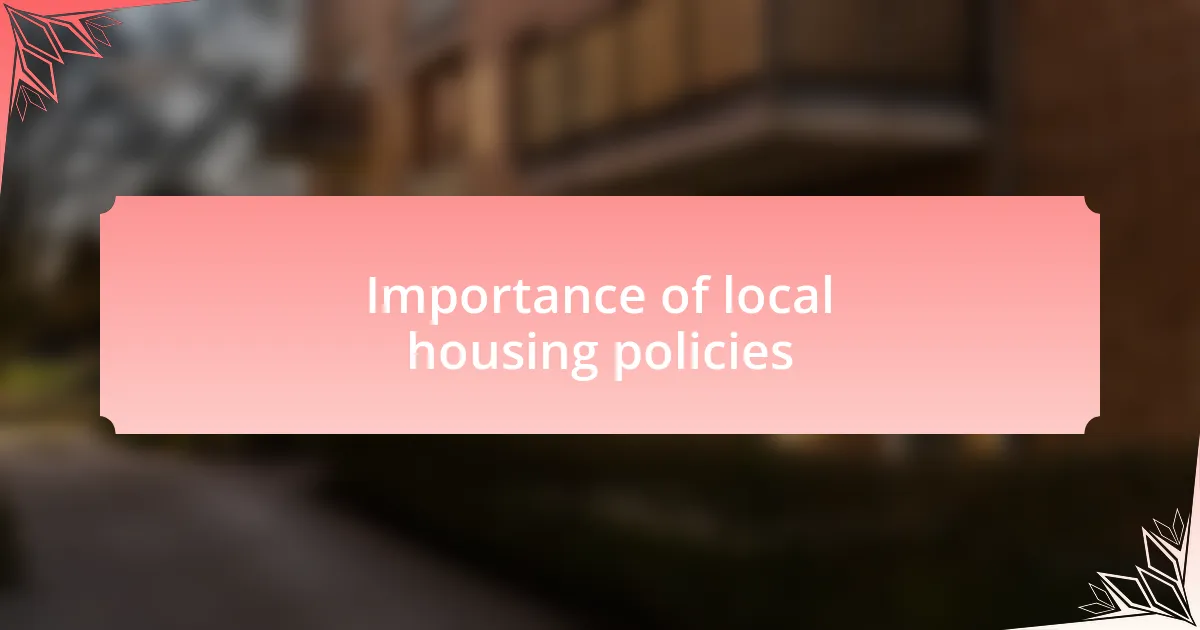
Importance of local housing policies
Local housing policies play a pivotal role in shaping the quality of life in any community. I recall a neighborhood meeting where residents passionately discussed the need for zoning reforms to enable more affordable housing developments. It struck me how, without such policies, families could easily find themselves squeezed out of areas they’ve called home for generations.
In my observations, effective local housing policies not only address immediate needs but also create a framework for future growth. For instance, when a community prioritizes mixed-income housing, it helps to bridge socioeconomic divides. Aren’t we all better off when diverse voices and backgrounds can contribute to the fabric of our neighborhoods?
Moreover, local housing policies can empower residents by involving them in the decision-making process. I remember volunteering at a public forum where community members shared their housing stories, and it became clear how much these policies affected their daily lives. Isn’t it fascinating how just a few changes in local policies can lead to a sense of security and belonging for countless individuals?
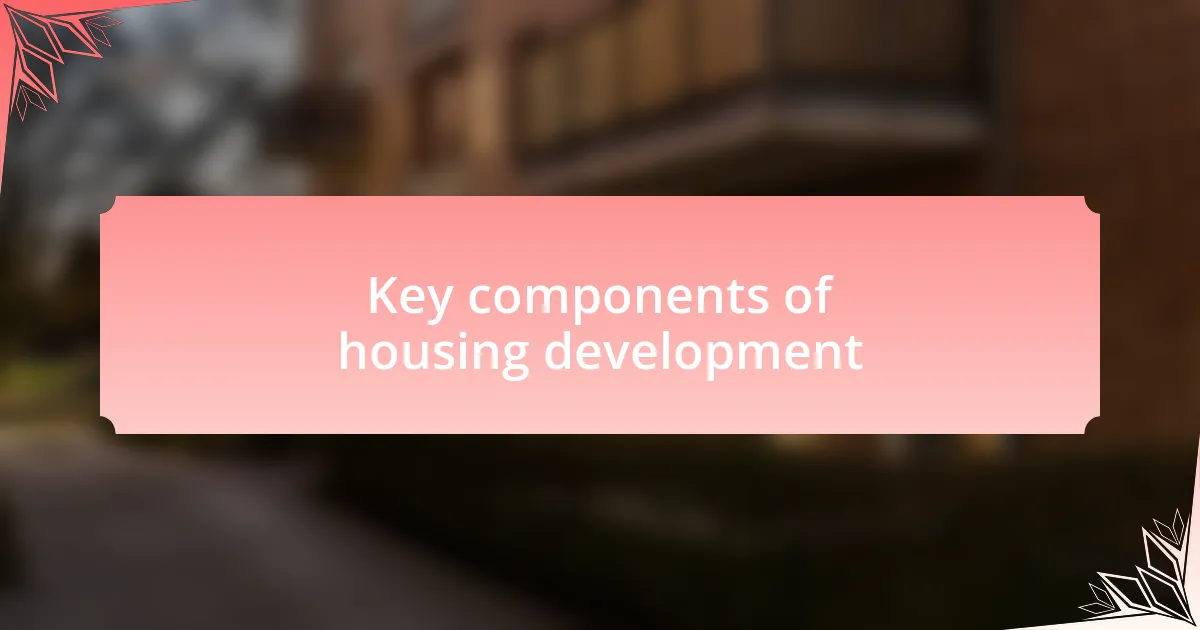
Key components of housing development
When considering key components of housing development, one of the most crucial elements is adequate planning and zoning. I recall a city struggling with the rapid influx of new residents without a corresponding increase in housing options. It was disheartening to see families living in overcrowded conditions, all because the zoning laws restricted the construction of multi-family units in areas with great schools and amenities. Isn’t it critical that we rethink these outdated regulations to accommodate growing populations?
Another essential aspect is infrastructure development. I once attended a meeting where city planners outlined how expanding transportation options dramatically increased the appeal of new housing projects. It made me realize that when people have access to public transit and essential services, they are more likely to choose those areas to live. Isn’t it interesting how the right infrastructure can turn potential housing developments into thriving communities?
Finally, community engagement is vital. I remember being part of a local focus group where residents shared their visions for new housing designs. It struck me how their ideas weren’t just about aesthetics but about creating spaces that foster connection and inclusivity. Shouldn’t we always prioritize the voices of those who will call these places home? After all, housing development should be a reflection of the community’s needs and aspirations, not just a checklist of architectural features.
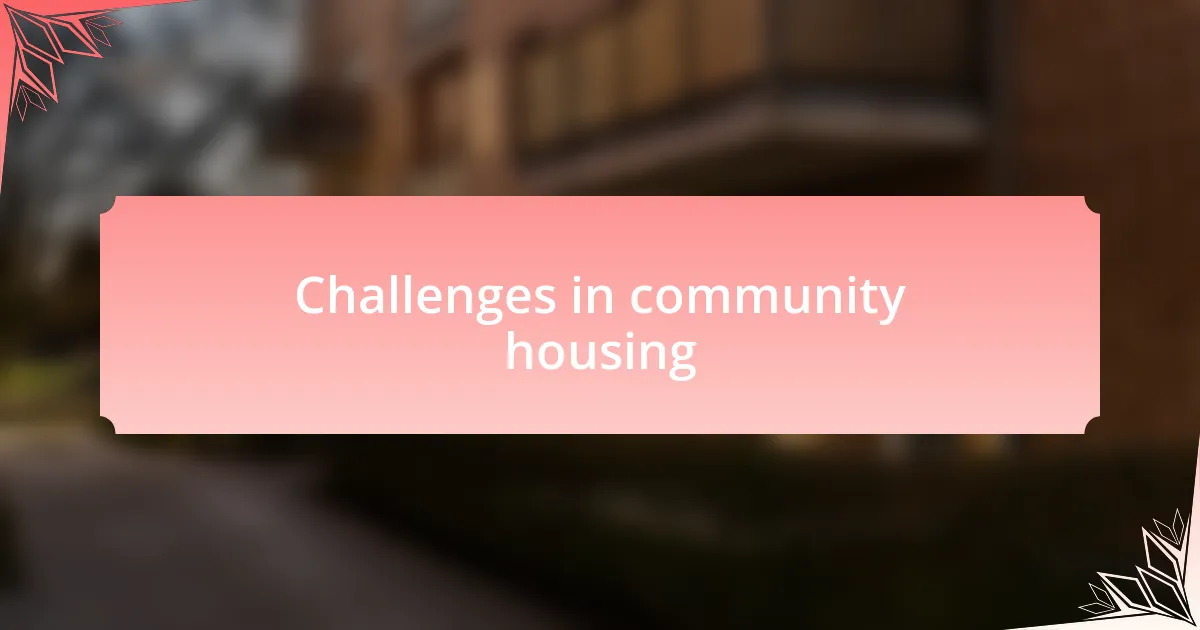
Challenges in community housing
One of the most significant challenges in community housing is funding. I recall attending a workshop where local developers expressed frustration over dwindling financial support. Many innovative projects that could transform neighborhoods were stalled due to budget constraints. Isn’t it frustrating to think that financial limitations can stifle creativity and potential growth in our communities?
Another issue is resistance from existing residents, often rooted in fear of change. I once engaged in discussions with homeowners who were concerned that new developments would alter the character of their neighborhoods. This experience reminded me that while it’s important to pursue new housing solutions, we must also consider the sentiments and values of long-standing community members. How do we strike that balance between development and preservation?
Lastly, there’s the ever-present challenge of meeting diverse housing needs. I remember visiting a community forum where a single mother expressed her struggles to find affordable housing that met her family’s unique requirements. It made me realize that creating community housing isn’t one-size-fits-all; it involves understanding different demographics and tailoring solutions accordingly. Don’t we owe it to our communities to ensure that everyone has access to suitable housing?
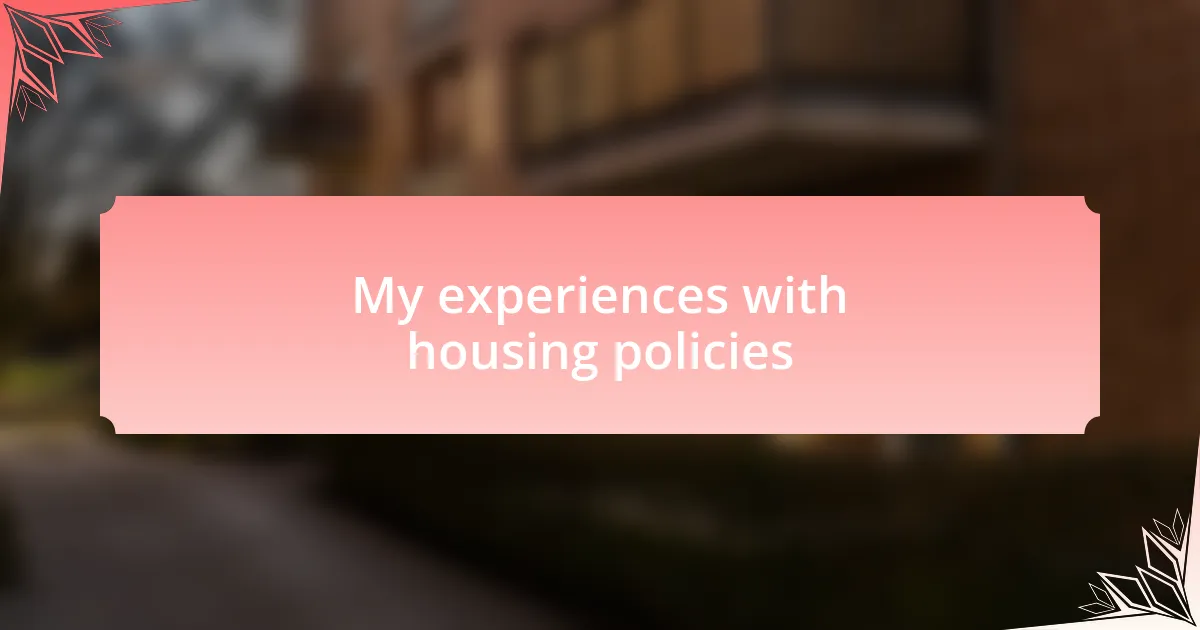
My experiences with housing policies
My experiences with housing policies have been eye-opening. I once participated in a local council meeting where we discussed proposed zoning changes. The energy in the room was palpable; people excitedly offered ideas about how to make living spaces more accessible. It struck me how policy decisions truly have the power to shape our daily lives, yet those directly impacted often feel left out of the conversation. Have you ever felt your voice was overlooked?
Another notable experience occurred when I volunteered with a nonprofit focused on housing advocacy. We organized a campaign to educate the community about new rental assistance programs. Listening to individuals share their personal challenges made me appreciate the direct impact these policies can have on people’s lives. It was incredible to see how increased awareness led to greater participation in local initiatives. Isn’t it inspiring when people come together for a common cause?
I also remember a frustrating moment navigating the application process for affordable housing. The paperwork was overwhelming, and I could see how it discouraged many qualified applicants. It made me reflect on how cumbersome processes can perpetuate inequality. Shouldn’t we strive to make these systems more user-friendly to truly help those in need?
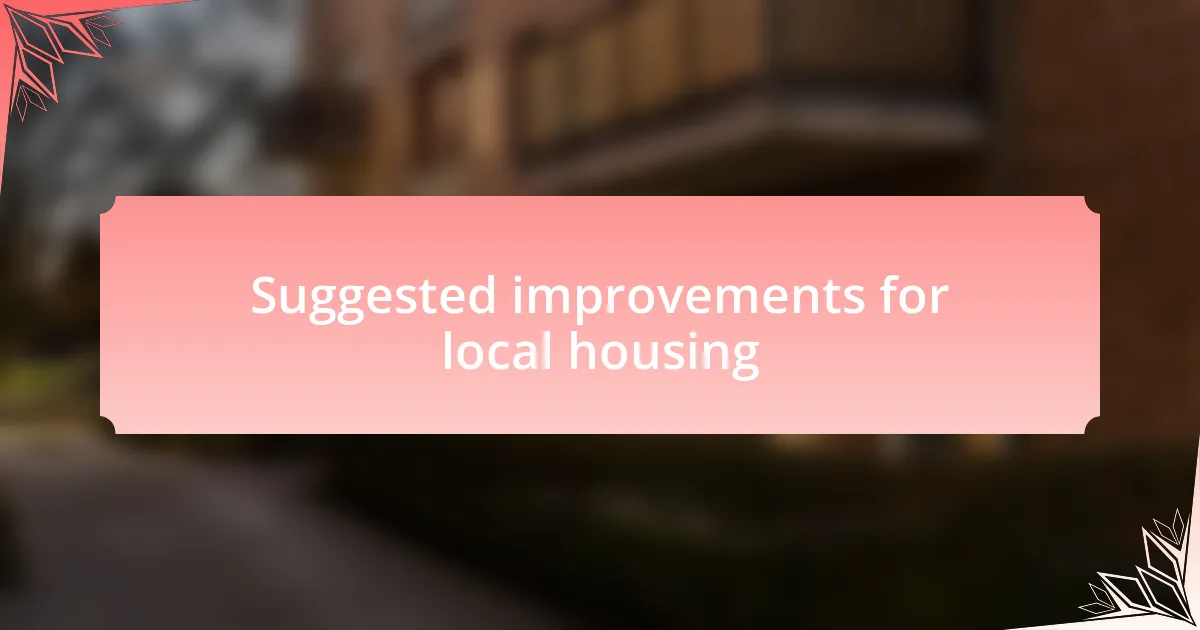
Suggested improvements for local housing
When considering improvements for local housing, I often think of streamlining the application processes. Relying on my experience, I’ve seen firsthand how opaque and complicated systems can lead to frustration. Wouldn’t it be more effective if we simplified applications into more digestible formats? This could empower potential renters and homeowners to navigate the system with confidence, reducing barriers that currently exist.
Another area needing attention is the need for better community engagement in housing development plans. I recall attending a workshop where residents were invited to share their thoughts on a proposed project, but it felt rushed and uninformative. How often do we lose valuable insights because people don’t have enough time to express their needs? Genuine, open forums can yield solutions that align with community interests, making everyone feel like they have a seat at the table.
Additionally, enhancing access to financial education about housing options could make a significant difference. There was a time when I stumbled upon resources that helped me better understand my mortgage options, and it felt enlightening. Why aren’t more people offered the same chance to learn about budgeting, grants, and loans? By providing workshops and resources that demystify these concepts, we can empower individuals and families to make informed decisions about their housing futures.